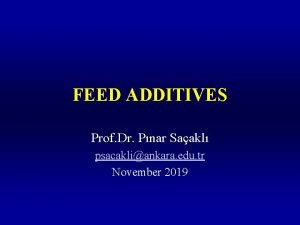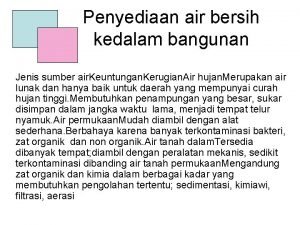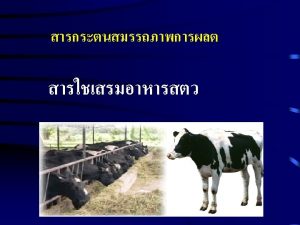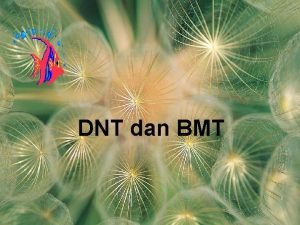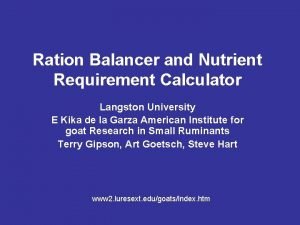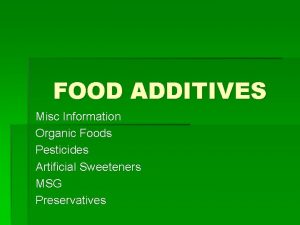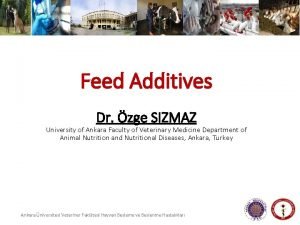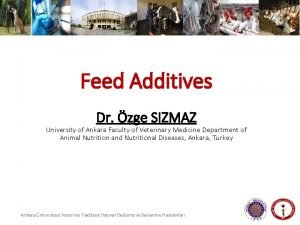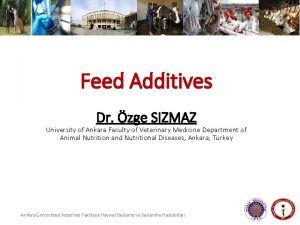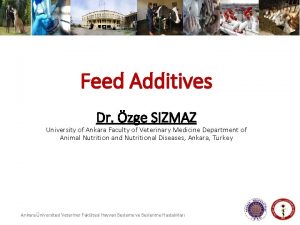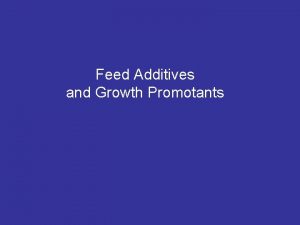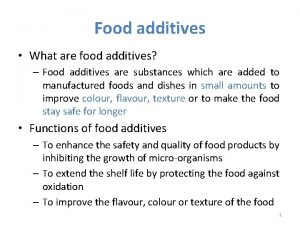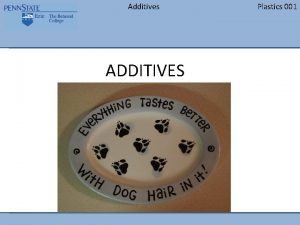Feed Additives Dr zge SIZMAZ University of Ankara










- Slides: 10

Feed Additives Dr. Özge SIZMAZ University of Ankara Faculty of Veterinary Medicine Department of Animal Nutrition and Nutritional Diseases, Ankara, Turkey Ankara Üniversitesi Veteriner Fakültesi Hayvan Besleme ve Beslenme Hastalıkları

Silage Feed Additives Purpose: 1. Perfect protection by effective fermentation 2. Good quality of nutrients 2

Silage Feed Additives 1. Stimulants a. Inoculants b. Enzymes c. Sugars 1. Inhibitors a. Aerobic (acids) b. Anaerobics 3

Silage Feed Additives Inoculants • Lactic acid bacteria (Lactobacillus spp. , Pediococcus spp. , Streptococcus spp and yeasts) Enzymes • Cellulase, amylase, protease Sugars • Molasses, glucose 4

Silage Feed Additives Aerobic • Propionic acid, sorbic acid, acetic acid, propionate, ammonia, formic acid, lactic acid, citric acid. . Anaerobic • Formaldehyte, SO 2 5

Silage Feed Additives Stimulants Bacteria must be 105/gr in hay Molasses : DM and lactic acid increase, p. H and NH 3 decrease add 3 -6% to silage 6

Silage Feed Additives Stimulants Whey: rich in CHO and lactic acid bacteria add 2 -3% Sugar: not common add 2 -3% 7

Silage Feed Additives Stimulants Salt: bactericid water level increase = benefial bacteria go out besides harmfulls Limestone: to increase lactic acid concentration in maize silage add 9 kg/ton 8

Silage Feed Additives Inhibitors Formic acid: most common used in silages that are rich in moisture Propionic acid: in dry hay Acetic acid : cheap 9

Silage Feed Additives Inhibitors Salts of acids: prevent the silage by increasing the osmotic pressure inhibit the Maillard reaxions add 1 -1, 5% 10


